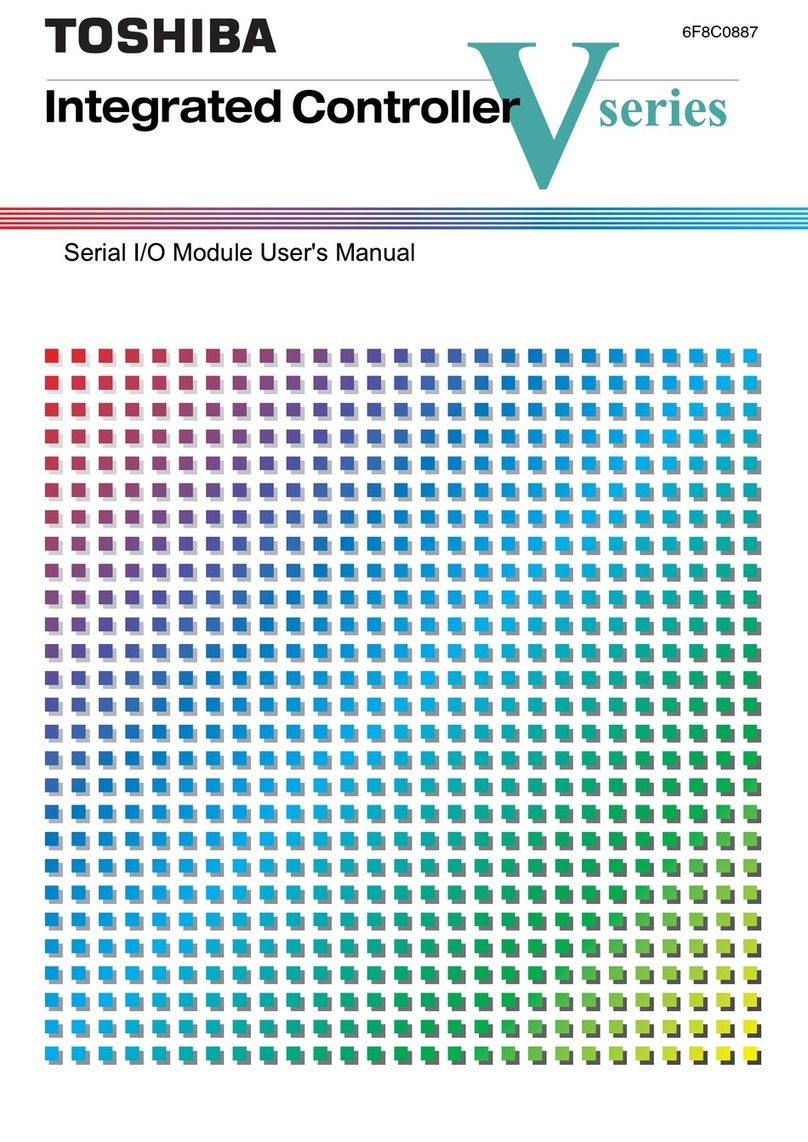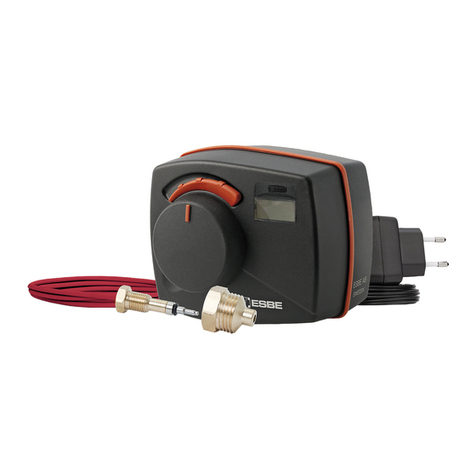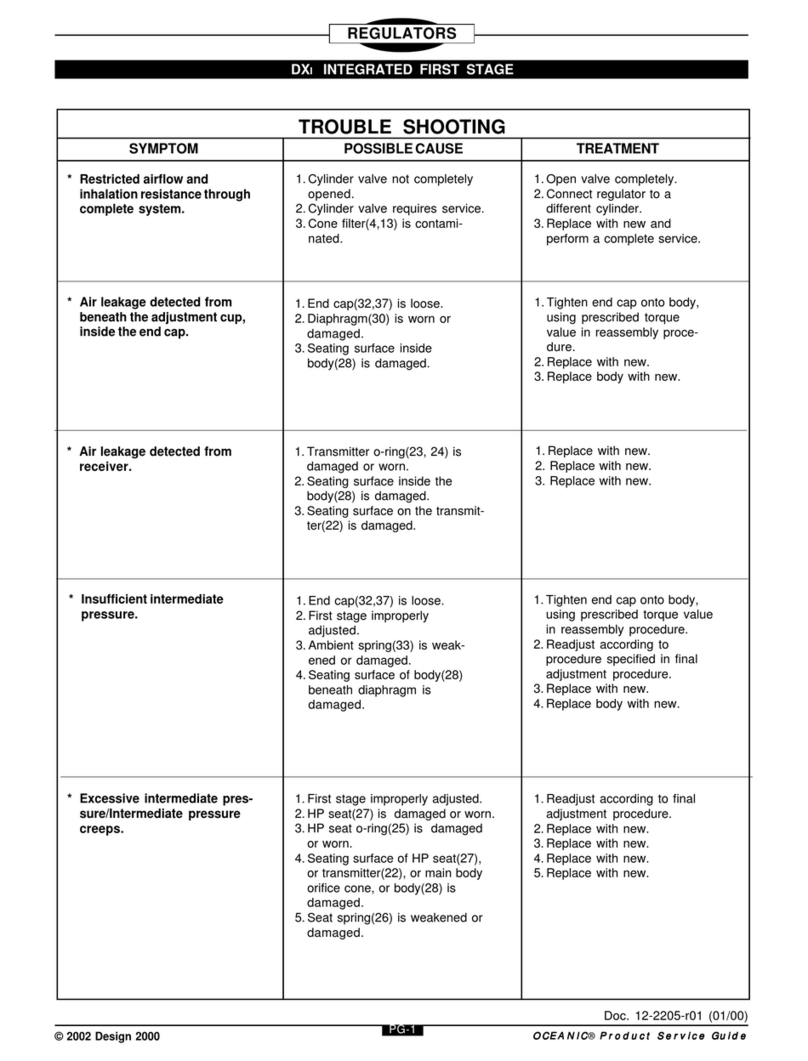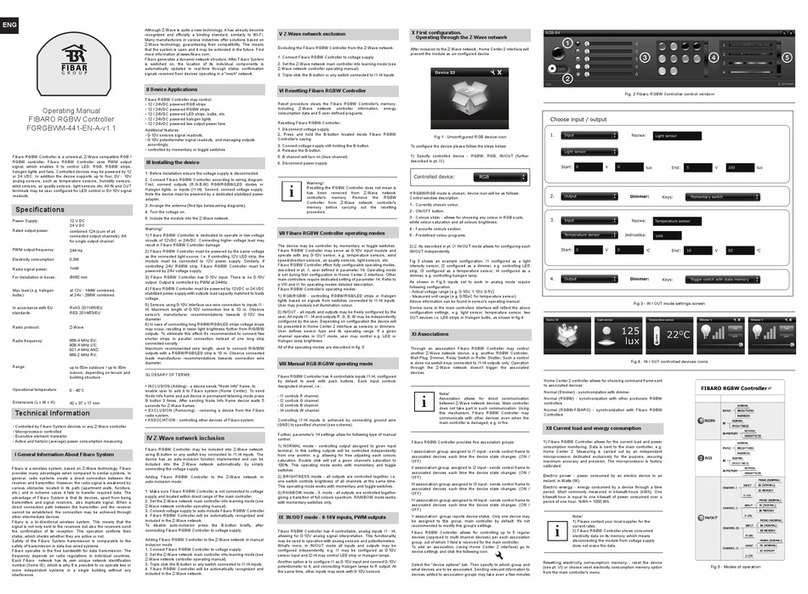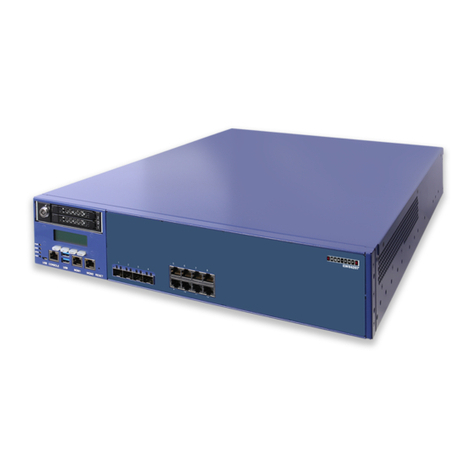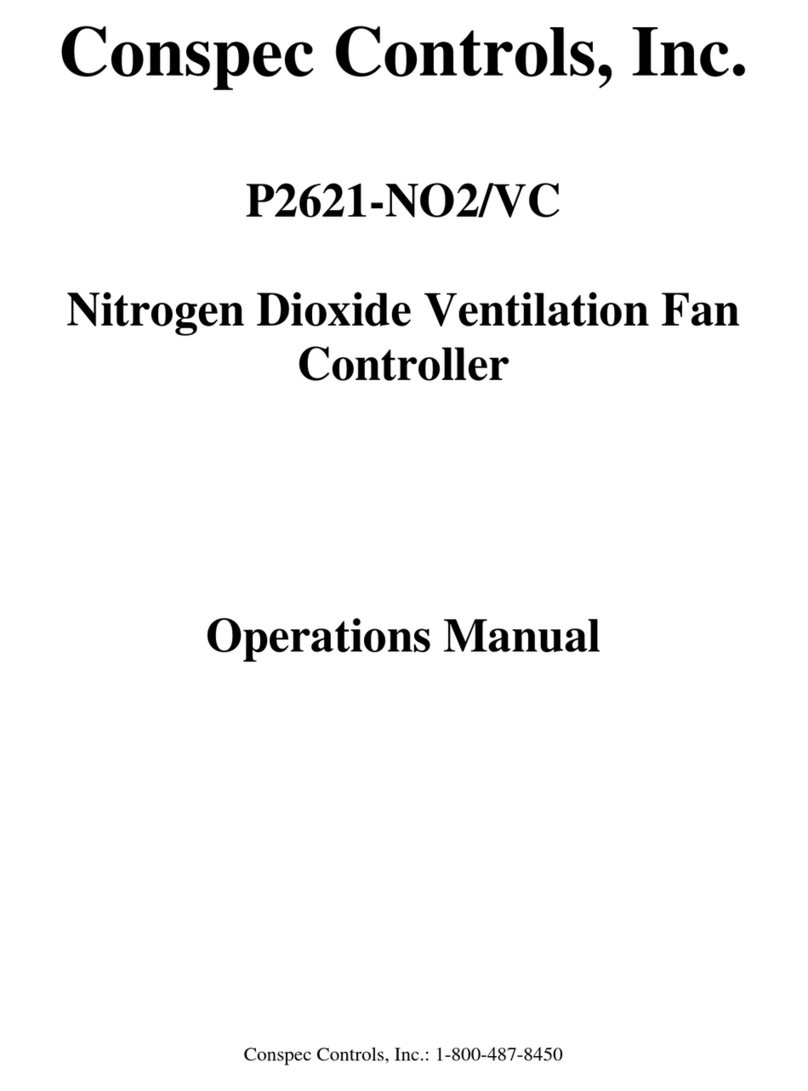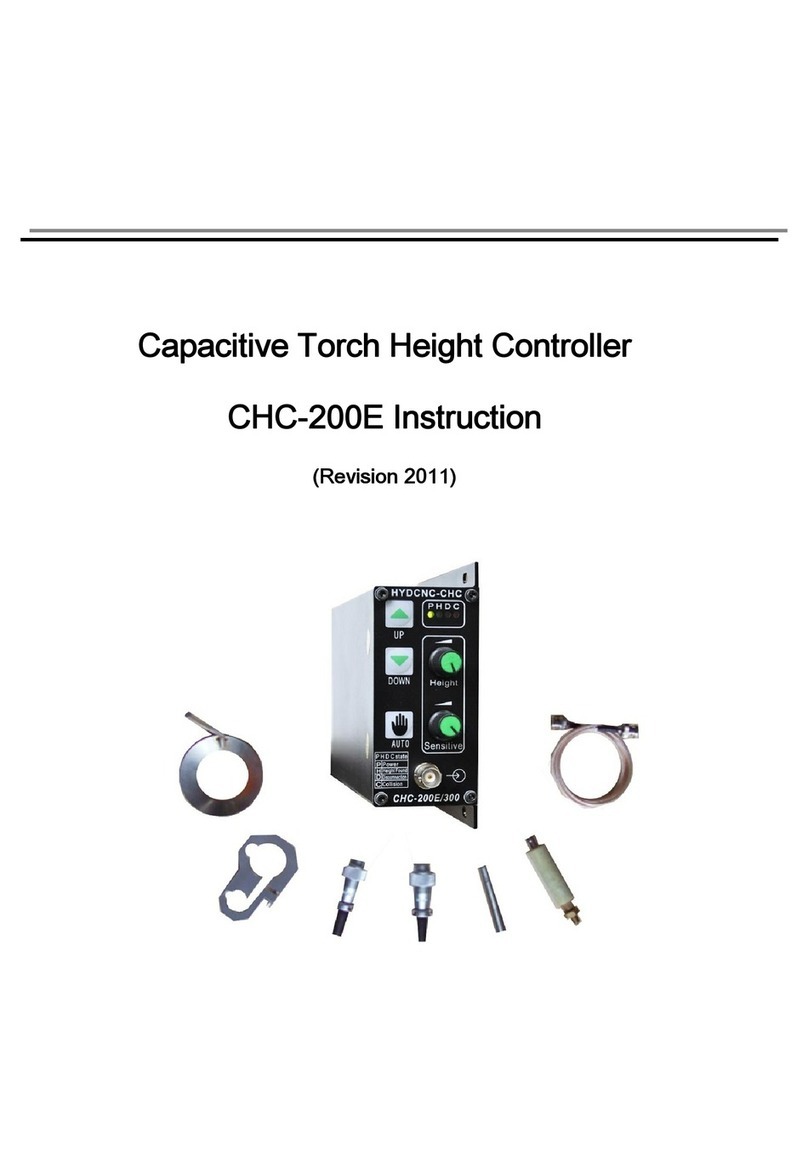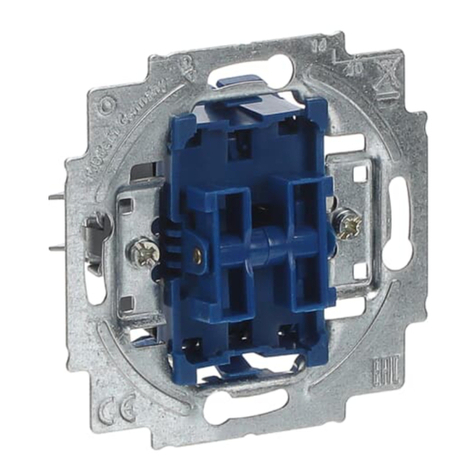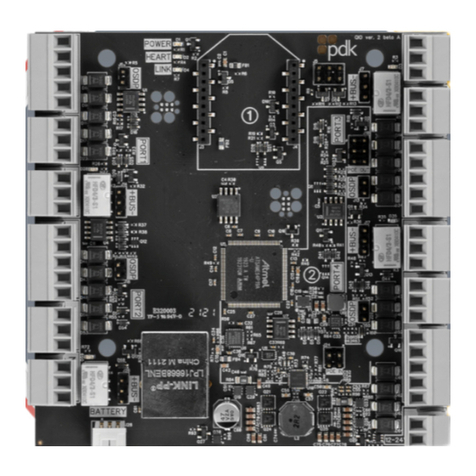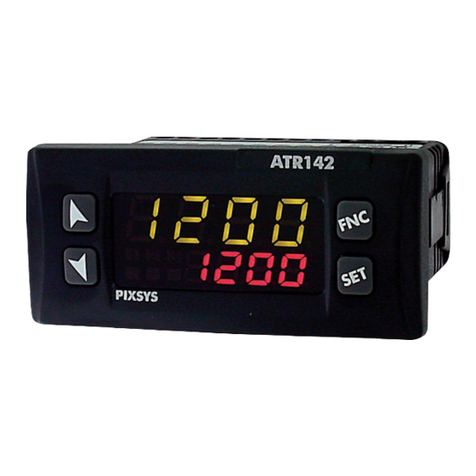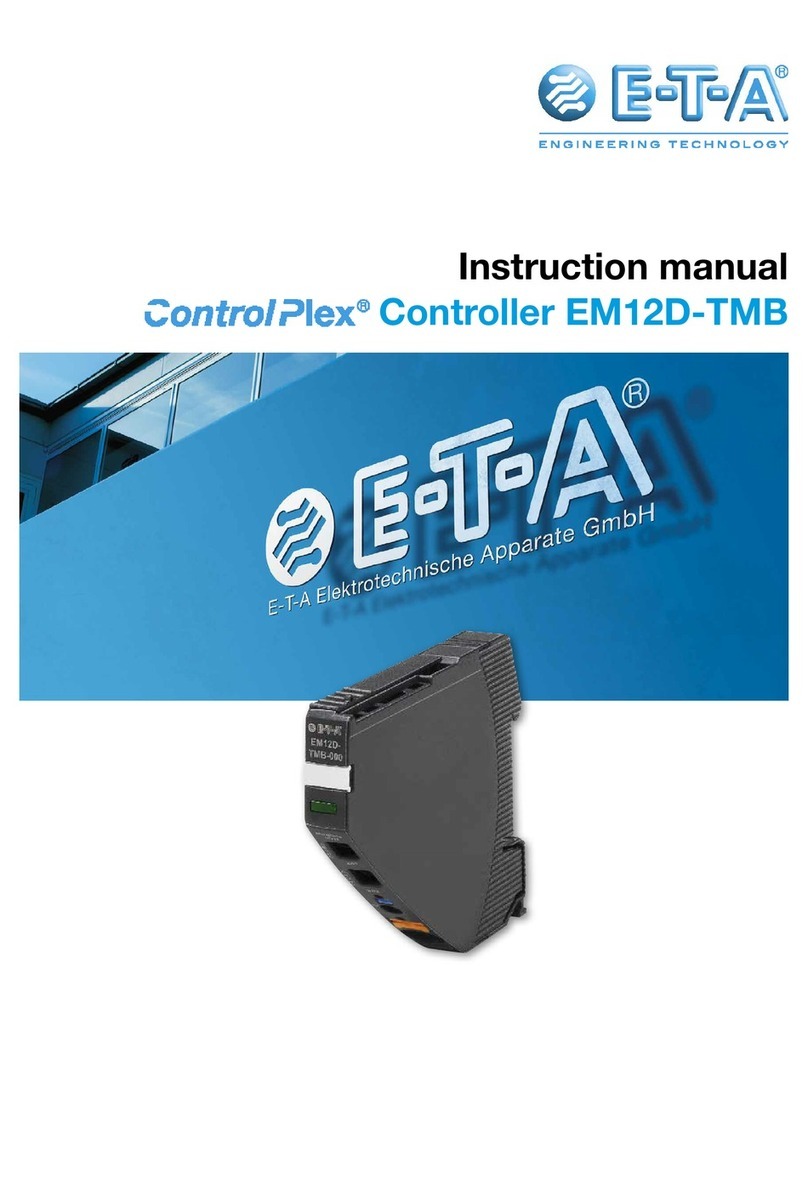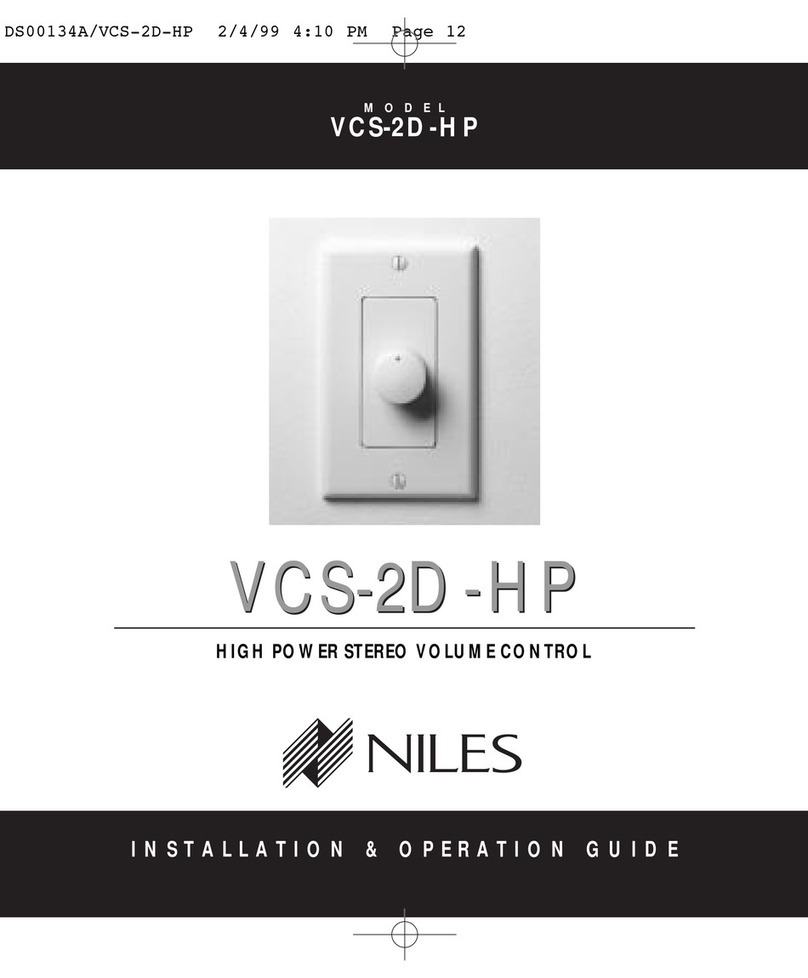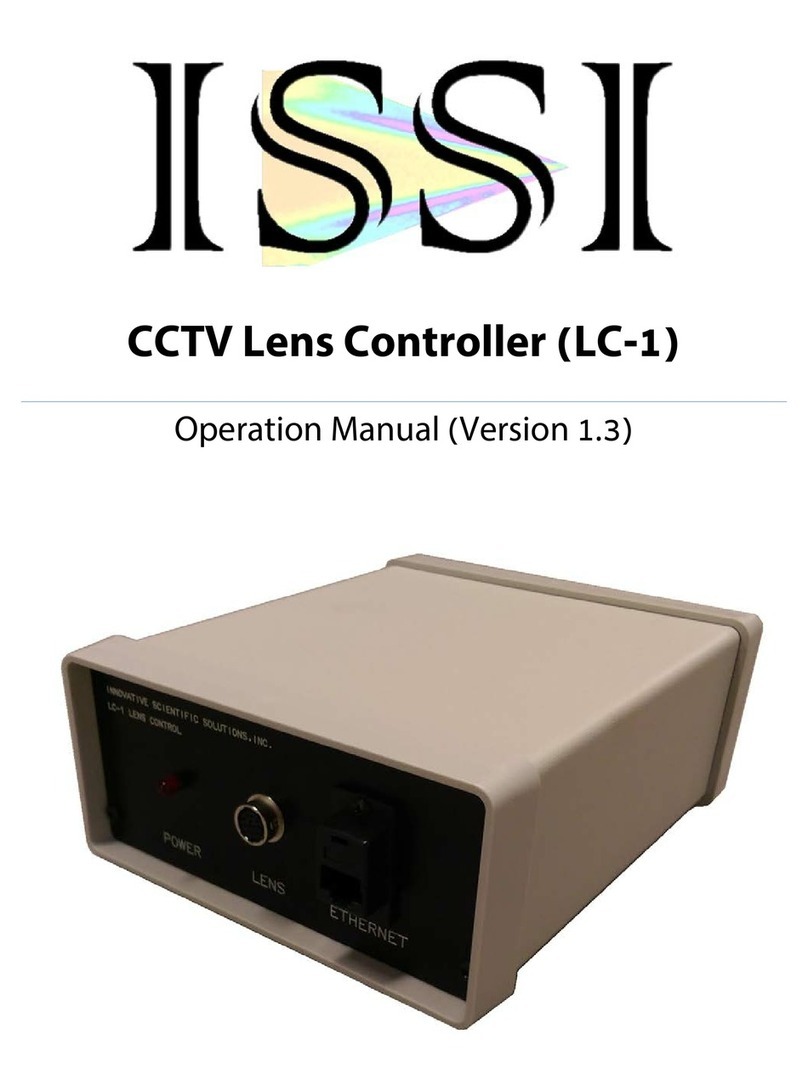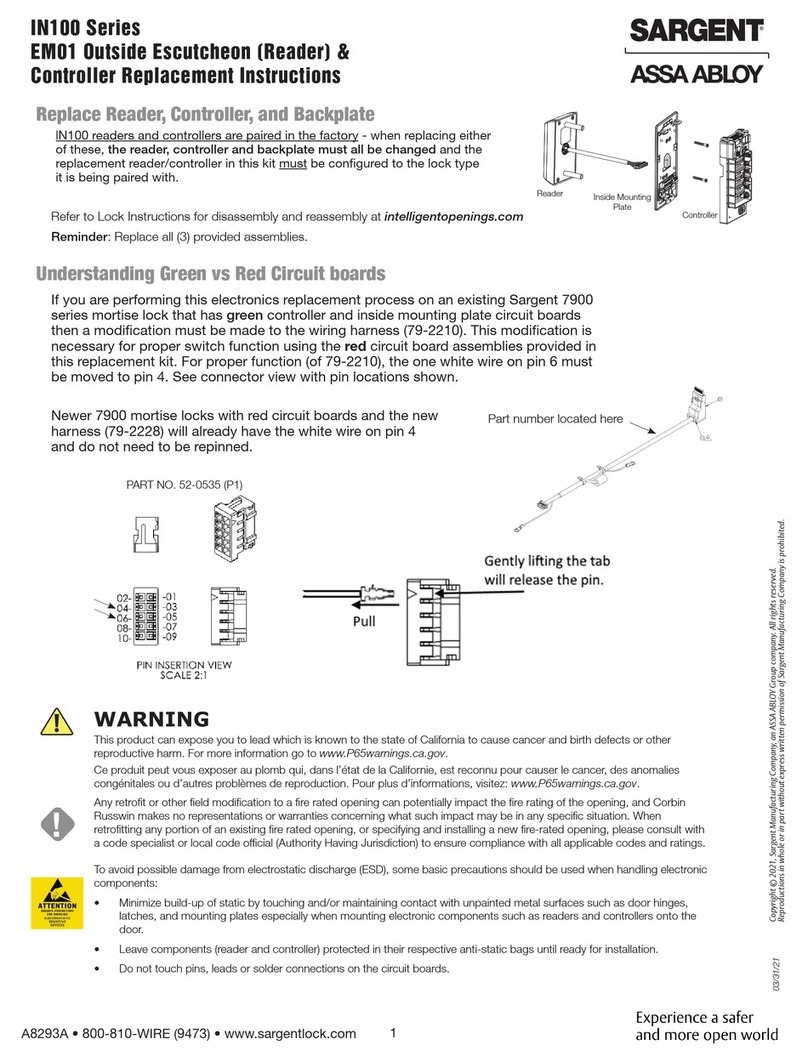Stag AFR User manual

AC S.A. All rights reserved. Any unauthorized copying, reproduction, publishing, dissemination, disclosing or other use of information presented herein, in whole or as part, particularly photographs,
drawings, trademarks, etc., may lead to prosecution or civil proceedings.
Operating Instruction
STAG AFR
Wideband Oxygen
Sensor Controller
(instruction available also in the AC AFR software and at www.ac.com.pl)
ver. 1.1 2014-12-11

AC S.A. All rights reserved. Any unauthorized copying, reproduction, publishing, dissemination, disclosing or other use of information presented herein, in whole or as part, particularly photographs,
drawings, trademarks, etc., may lead to prosecution or civil proceedings.
2
Contents
1. Wiring diagram for STAG AFR connection...................................................................................................... 3
2. Contents of the kit.............................................................................................................................................. 3
3. Purpose ................................................................................................................................................................. 3
4. Installation............................................................................................................................................................ 4
4.1 Lambda probe mounting location.................................................................................................................... 5
4.2 Mounting by using the mounting sleeve........................................................................................................ 5
4.3 Mounting by using the exhaust gas guiding pipe....................................................................................... 6
5. AC AFR Application ........................................................................................................................................... 8
5.1. Connecting the controller to a PC.................................................................................................................. 8
5.2. AC AFR Application version............................................................................................................................ 8
5.3. Main menu............................................................................................................................................................. 8
5.4 "Gauge” tab ........................................................................................................................................................... 9
5.5 "Graph” tag.......................................................................................................................................................... 10
5.6 "Settings” window ............................................................................................................................................. 11
5.7 "Update" window................................................................................................................................................ 12
5.8 "About the program" window......................................................................................................................... 13
6. Guidelines for use of the STAG AFR controller........................................................................................ 13
6.1 Adjustment of LPG/CNG systems in gasoline engines ........................................................................... 13
6.2 Adjustment of LPG/CNG direct injection in spontaneous combustion engines............................... 14
7. Technical data.................................................................................................................................................... 14
8. Warranty terms and conditions..................................................................................................................... 14

AC S.A. All rights reserved. Any unauthorized copying, reproduction, publishing, dissemination, disclosing or other use of information presented herein, in whole or as part, particularly photographs,
drawings, trademarks, etc., may lead to prosecution or civil proceedings.
3
1. Wiring diagram for STAG AFR connection
Figure 1. Wiring diagram for STAG AFR connection
2. Contents of the kit
STAG AFR - wideband oxygen sensor controller
Wideband oxygen sensor –Bosch LSU 4.9 (0 281 004 026)
Wire harness
Wiring diagram
Oxygen sensor mounting sleeve
Plug
CD
Additional cable for the analogue output (0-5V)
3. Purpose
The STAG-AFR controller for wideband oxygen sensors has been designed to determine the air-to-fuel
ratio (AFR) for an internal combustion engine based on the measurement of oxygen in the exhaust gas.
Measurements are made with a wideband oxygen sensor that may be used in engines fed with a wide
range of fuels such as unleaded gasoline, diesel, LPG, natural gas, methanol and ethanol.
The wideband oxygen sensor provided in the kit should not be used in leaded gasoline engines
and two-stroke engines.
In both cases, the probe lifetime is dramatically reduced.
STAG AFR is an alternative to expensive exhaust gas analyzers. Due to high-speed measurements of
lambda parameter (AFR - air-fuel ratio), it is possible to control air-fuel mixture not only in steady but also
in transient engine operating states
The kit can be used, for example, for adjusting both carburettor and fuel injection systems, calibrating
LPG/autogas systems of any fuel system diagnostic generation available on the market, diagnostics of fuel
systems, diagnostics of factory installed oxygen sensors and control of air-fuel mixture during chip-tuning
system calibration. Knowing a current air-fuel ratio for the mixture supplied to the engine, the user is able
ATTENTION!

AC S.A. All rights reserved. Any unauthorized copying, reproduction, publishing, dissemination, disclosing or other use of information presented herein, in whole or as part, particularly photographs,
drawings, trademarks, etc., may lead to prosecution or civil proceedings.
4
to make precise adjustment of the fuel system to ensure optimum engine power, while having reasonable
fuel consumption.
STAG AFR is provided with an analogue 0V to 5V output. It can be used to connect an external AFR
indicator, as well as chassis dynamometers with an analogue input for the AFR reading, external data
loggers and standalone/piggyback type ECM units. Activation of the option requires connecting an
additional cable included in the kit to the harness, in accordance with fig. 1. Relation of the analogue
output voltage level to the AFR and Lambda value has been presented in Table No. 1.
Lambda
AFR (Pb)
Voltage [V]
0,7
10,29
0
0,73
10,73
0,25
0,76
11,17
0,5
0,79
11,61
0,75
0,82
12,05
1
0,85
12,5
1,25
0,88
12,94
1,5
0,91
13,38
1,75
0,94
13,82
2
0,97
14,26
2,25
1
14,7
2,5
1,03
15,14
2,75
1,06
15,58
3
1,09
16,02
3,25
1,12
16,46
3,5
1,15
16,91
3,75
1,18
17,35
4
1,21
17,79
4,25
1,24
18,23
4,5
1,27
18,67
4,75
1,3
19,11
5
Table 1. Analogue output voltage vs. AFR and Lambda value.
4. Installation
The STAG AFR controller is designed to be used inside the passenger compartment of the vehicle. The
controller should not be mounted inside the engine bay or other locations exposed to moisture or high
temperature.
The controller is powered by a standard 12 V cigarette-lighter socket. Ensure that the oxygen sensor
connector is connected to the controller harness properly before plugging in. When connected to the
socket the green LED in the plug should be on. If this LED is off, while the plug is inserted properly and
the socket is active (the key is put into the ignition at appropriate position), check the fuse in the power
supply plug. Replace with a new one of current rating: 5-8 A.

AC S.A. All rights reserved. Any unauthorized copying, reproduction, publishing, dissemination, disclosing or other use of information presented herein, in whole or as part, particularly photographs,
drawings, trademarks, etc., may lead to prosecution or civil proceedings.
5
The wideband oxygen sensor that comes with the kit is factory calibrated and requires no periodic
calibration. If the probe requires to be replaced, the sensor of the same code (0 281 004 026) should be
used. The use of improper sensor will damage it. Before mounting remove the transport protective plastic
cap from the sensor. The sensor should be tightened to 25 Nm.
When the controller is powered and within several minutes after switching off, the oxygen
sensor remains heated to a high temperature. Do not touch the hot sensor and do not let it
touch inflammable components. Do not use the sensor near flammable liquid and gases.
Failure to comply with the above instructions can cause severe burns and fire!
Po After placing the oxygen sensor in the exhaust system, the probe has to be powered all the
time when the engine is running. Disconnected or de-energized probe is exposed to exhaust
gas it will be quickly damaged!
4.1 Lambda probe mounting location
Figure 2. Wideband oxygen sensor mounting location
4.2 Mounting by using the mounting sleeve
It is recommended to mount the oxygen sensor in the exhaust system by using the mounting sleeve that
comes with the kit. The sleeve dimensions are shown in Figure 2. The location of sleeve mounting will vary
depending on the shape of the exhaust manifold used in the vehicle, but compliance with the guidelines
below ensures maximum lifetime of the oxygen sensor and the highest measurement accuracy.
If the vehicle is equipped with a catalyst (catalytic converter), the sleeve should be placed upstream the
catalyst. If the vehicle is equipped with a turbocharger, the sleeve should be mounted downstream the
ATTENTION!
ATTENTION!

AC S.A. All rights reserved. Any unauthorized copying, reproduction, publishing, dissemination, disclosing or other use of information presented herein, in whole or as part, particularly photographs,
drawings, trademarks, etc., may lead to prosecution or civil proceedings.
6
turbocharger, as exhaust gas pressure variations upstream the turbocharger may cause a false reading.
The sleeve should be placed at the maximum available distance from the cylinder head, and in
turbocharged engines - from the turbocharger (50 cm minimum). Otherwise, the oxygen sensor can
overheat and fail!
When the probe is installed too close to the cylinder head it may overheat and fail!
A gap of at least 50 cm should be kept.
Figure 3. The recommended dimensions of the oxygen sensor mounting sleeve.
The oxygen sensor should be put in the exhaust gas stream in such a way so that atmospheric sensor
does not affect the results of measurement (the exhaust system between the engine and measuring point
should be tight).
The oxygen sensor mounting sleeve should be mounted in the upper part of the exhaust manifold
(between 10 and 2 o'clock), as shown in Figure 3.
When the probe is mounted with the harness faced downward the probe measuring element
will be rapidly damaged by condensed water vapour!
Figure 4. The minimum mounting angle of the oxygen sensor installed in the exhaust system.
4.3 Mounting by using the exhaust gas guiding pipe
If measurements are to be made on many vehicles, it is suggested to make an exhaust gas guiding pipe
to facilitate quick mounting and dismounting of the kit. Shown below the exhaust guide allows the study of
the composition of the mixture, regardless of the circumstances under which the measurement is
performed.
ATTENTION!
ATTENTION!

AC S.A. All rights reserved. Any unauthorized copying, reproduction, publishing, dissemination, disclosing or other use of information presented herein, in whole or as part, particularly photographs,
drawings, trademarks, etc., may lead to prosecution or civil proceedings.
7
For both studies the composition of the mixture only at maximum engine load (e.g. calibration of
sequential autogas systems or fuel feed system equipped with a wideband oxygen sensor, where the air-
fuel ratio at low and partial engine load is controlled by the engine controller), when the exhaust gas
stream is strong, as well as the measurement at idle and at low engine loads when the ambient air might
disturb the measurement at low gas flow, shown in (Fig. 5) guide allows the correct test.
Figure 5. The guide positioned exhaust from the probe.
When making the guiding pipe remember that the probe wire harness should be routed beyond the hot
exhaust gas area.
When using a guiding pipe, it should not be placed in the exhaust gas stream until the engine
is initially warmed up. Large amounts of water vapour present in exhaust gases during start-up
and warming up of cold engine may damage the oxygen sensor.
ATTENTION!
probe
thread M18x1,5

AC S.A. All rights reserved. Any unauthorized copying, reproduction, publishing, dissemination, disclosing or other use of information presented herein, in whole or as part, particularly photographs,
drawings, trademarks, etc., may lead to prosecution or civil proceedings.
8
5. AC AFR Application
5.1. Connecting the controller to a PC
Just after the kit is mounted in the vehicle, a computer with AC AFR software installed should be
connected to the controller by using an USB interface, RS232 or Bluetooth of AC S.A., and then the
program AC AFR should be started. After starting the program, if serial port COM is selected properly, the
controller should establish a connection to a diagnostic program, as indicated by the text "Connected" at
the left bottom corner of the program screen.
If "No connection" is displayed at the left bottom corner of the program window, another port must be
selected from the "Connections" menu, and then "Ports" at the top of the program window.
When connection to the controller is established successfully, current operating status of the controlled is
displayed at the right bottom corner of the program screen. The following status can be displayed:
Warming up –the wideband oxygen sensor is being warmed up, and this may last even two minutes
depending on exhaust gas temperature and power supply voltage, however normally it takes less
than one minute from switching the controller on.
Work –the oxygen sensor reached its working temperature and started measurement
Update –the controller software is being updated
Fault –the possible causes are:
oxygen sensor is not connected to the controller
faulty oxygen sensor
damaged wire harness
damaged controller
5.2. AC AFR Application version
NThe version of AC AFR Application is shown at the top of the program screen. In Figures 6 to 11 the
program in version 1.0.0 is presented.
5.3. Main menu
Figure 6. Main menu
The following options are available in Main menu:
Connection
Connect - enables connection to the controller to be established

AC S.A. All rights reserved. Any unauthorized copying, reproduction, publishing, dissemination, disclosing or other use of information presented herein, in whole or as part, particularly photographs,
drawings, trademarks, etc., may lead to prosecution or civil proceedings.
9
Disconnect - enables connection to the controller to be ended
Auto Connect - when this function is active, connection to the controller is established
automatically after disconnecting and re-connecting USB interface to the computer
Auto search
Disabled - if connection to the controller via a selected port cannot be established, no
attempts to establish connections via other available ports to be made
Accurate - if connection to the controller via a selected port cannot be established, attempts
to establish connection via all other available ports will be made one by one (this setting is
recommended, especially when Bluetooth interface is used)
Fast, Very fast - if connection to the controller via a selected port cannot be established,
attempts to establish connection via all other available ports will be made but within reduced
time for individual ports
Ports - allows communication port to be changed
Tools
Settings - opens a window enabling controller and application settings to be changed
Update - opens a window enabling controller software to be updated
Operating Instruction - opens this Instruction
About the program - information on application and the manufacturer's contact data
Language - allows application language to be changed
5.4 "Gauge”tab
Figure 7. Main window ("Gauge" tab).
The Gauge tab contains a dial indicator of the measured value (default: AFR - lambda parameter) and
corresponding numerical value is displayed below it.
The dial indicator has colour-coded ranges that facilitate visual evaluation of the air-fuel ratio with no
necessity to read an accurate value. For spark-ignition engines the lambda parameter or AFR values
within individual ranges have the following meaning:
Dark green –very rich mixture, the value within this range is correct at maximum engine load only,
especially for turbocharged engines, where the air-fuel mixture may be particularly rich,

AC S.A. All rights reserved. Any unauthorized copying, reproduction, publishing, dissemination, disclosing or other use of information presented herein, in whole or as part, particularly photographs,
drawings, trademarks, etc., may lead to prosecution or civil proceedings.
10
Green –rich mixture, for engines with factory installed oxygen sensors, the value within this range
is correct at maximum engine load only, otherwise such values may occur at any engine load and
rpm,
Yellow –stoichiometric mixture (air-fuel ratio ensuring complete fuel combustion), for engines with
factory installed oxygen sensors, the value within this range is correct at low and partial engine
loads,
Red –lean mixture, the value within this range is unacceptable (except a situation when fuel feed is
cut off at idle engine).
5.5 "Graph” tag
The "Graph" tag contains an oscilloscope screen. The measured value (default: lambda parameter) is
displayed on the oscilloscope.
Figure 8. Main window ("Graph" tag).
There is a scrollbar enabling observation of previously recorded data and control buttons below the
oscilloscope. The buttons perform the following functions, when viewing from left to right:
Start Oscilloscope (next click clear the oscilloscope)
Pause Oscilloscope
The current oscilloscope screen is written to a file
Load oscilloscope file

AC S.A. All rights reserved. Any unauthorized copying, reproduction, publishing, dissemination, disclosing or other use of information presented herein, in whole or as part, particularly photographs,
drawings, trademarks, etc., may lead to prosecution or civil proceedings.
11
5.6 "Settings” window
Figure 9. "Settings" window
This window enables controller and application settings to be changed. The following options are
available:
Measured value
Lambda –lambda parameter is recommended to visualize measurements for spark-ignition
engines, as lambda does not depend on fuel type fed to the engine (lambda is always 1 for
stoichiometric mixture),
AFR –Air/Fuel Ratio) expresses the mass ratio of air to fuel present in the mixture; the value of
this parameter is not measured directly, but computed based on the value of lambda parameter
and type of fuel fed to the engine, thus requiring an appropriate fuel type to be selected (lambda
parameter for stoichiometric mixture depends on fuel type, and for example is 14.7 for gasoline),
Oxygen –oxygen content indicator is a known method of measurement visualization for
spontaneous combustion engines, since it allows the air-fuel ratio to be observed for a very wide
range of lean mixtures,
Fuel –used to indicate what fuel type is currently fed to the engine (only for computing AFR),
Sensitivity –when the oxygen sensor is installed to close to engine exhaust valves, the result of
measurement may change too rapidly, thus making its interpretation difficult; in such a case
sensitivity should be reduced to smooth rapid variations in measurements ,
Graph –enables the oscilloscope axis to be reversed to adapt measurement visualization to user's
preferences,
Normal –higher lambda values are shown at higher positions on the oscilloscope (leaner
mixture),
Reversed –lower lambda values are shown at higher positions on the oscilloscope (richer
mixture).

AC S.A. All rights reserved. Any unauthorized copying, reproduction, publishing, dissemination, disclosing or other use of information presented herein, in whole or as part, particularly photographs,
drawings, trademarks, etc., may lead to prosecution or civil proceedings.
12
5.7 "Update" window
Figure 10. "Update" window
The software version of the controller being currently connected is displayed in upper part of the window.
The list of available updates is presented in table below To load an update file from outside of the
program catalogue, press the "Load" and select an update file. The loaded update will appear on the list of
available updates. The "Update" key starts to upgrade controller software by using a selected update file.
When upgrading is done, connection to the controller is temporarily broken and established one again.
A new software version should be displayed in upper part of the window, in compliance with the selected
update file.
If the upgrading process fails, the "Update" window will open automatically after connection to the
controller is restored. The upgrading process should be repeated.

AC S.A. All rights reserved. Any unauthorized copying, reproduction, publishing, dissemination, disclosing or other use of information presented herein, in whole or as part, particularly photographs,
drawings, trademarks, etc., may lead to prosecution or civil proceedings.
13
5.8 "About the program" window
Rysunek 11. "About the program" window
This window shows the contact data of the company AC S.A. –the manufacturer of the controller and
software.
6. Guidelines for use of the STAG AFR controller
In gasoline engine, the optimum air-fuel mixture composition (AFR - Air/Fuel Ratio) is one gram of fuel
per 14.7 grams of air. For this ratio, all oxygen available in supplied air is theoretically used to completely
burn all of the fuel. This is so called "stoichiometric" air-fuel ratio and differs for various fuels:
unleaded gasoline –14.7
diesel oil –14.6
LPG –15.5
CNG –17.2
The lambda parameter is the ratio of the current mixture content to the stoichiometric one. For example,
for a gasoline engine when the mass ratio of fuel to air is 14.7, the lambda parameter is 1. When an engine
is running on a rich mixture, the value of lambda parameter drops below 1. For lean mixtures the lambda
value is greater than 1. Generally, spark-ignition engines equipped with a narrowband oxygen sensor at
low and medium loads, automatically maintain the lambda parameter close to 1. They reach its maximum
power at slightly enriched mixture (lambda between 0.8 and 0.9 in intake low engines; between 0.75 and
0.85 in turbocharged engines).
6.1 Adjustment of LPG/CNG systems in gasoline engines
To adjust autogas installation properly in an engine equipped with a narrowband oxygen sensor (usually
of voltage-control type) the mixture content should be checked at full load. The value of lambda
parameters on gasoline and gas under the same conditions (identical gear and rpm) should be identical.
If a car has not been factory equipped with a oxygen sensor, the full range of loads and rpm should be
set so that the lambda parameter remains almost unchanged after fuel conversion.

AC S.A. All rights reserved. Any unauthorized copying, reproduction, publishing, dissemination, disclosing or other use of information presented herein, in whole or as part, particularly photographs,
drawings, trademarks, etc., may lead to prosecution or civil proceedings.
14
6.2 Adjustment of LPG/CNG direct injection in spontaneous combustion engines
Diesel engines are adapted to be fed with a lean mixture. To measure composition of very lean mixtures
occurring at low and medium loads, it is necessary to observe oxygen content (in %) in exhaust gas (the
"Measured value" should be set to "Oxygen" in controller settings, as described in section 5 of this
instruction).
Depending on engine model, oxygen content in exhaust gas varies typically between a dozen of
percents at low loads and several per cents at high engine loads.
If at certain engine load range, oxygen content in exhaust gas drops to around 0% (this is indicated by
intensive smoke from the exhaust because the smoke limit is exceeded), it means that gas direct injection
or its increase has not justified (increased gas injection will cause no increase in engine power and
decrease in diesel oil consumption).
If oxygen content in exhaust gas is too high (12% can assumed as a reasonable limit, but this value will
vary depending on engine design), injected gas will not be burnt completely and will escape from the
exhaust in the form of not burnt hydrocarbons. In such situation no direct gas injection is recommended.
7. Technical data
Supply voltage 12[V] -20% ÷ +30%
Maximum input current 2A
Operating temperature -40°C ÷ 70°C
Protection Class IP40
8. Warranty terms and conditions
Warranty does not cover the wideband oxygen sensor provided in the kit. This is a consumable component
subject to natural wear.
Warranty also does not cover:
damages resulting from improper use of the device,
damages resulting from not keeping the set operating conditions (e.g. installation at locations not
consistent with installation instructions or in locations exposed to water or high temperature; supply
from a source of voltage exceeding the allowable range)
mechanical damages,
systems modified or repaired without authorisation,
mechanically damaged systems on user's fault, in particular:
damages to connectors,
damages to connectors due to use of chemical cleaning agents,
damages to housing,
damages to PCB’s,
systems damaged electrically due to connection of communication interfaces incompatible with
installation instruction,
other damages on user's fault.
Table of contents
